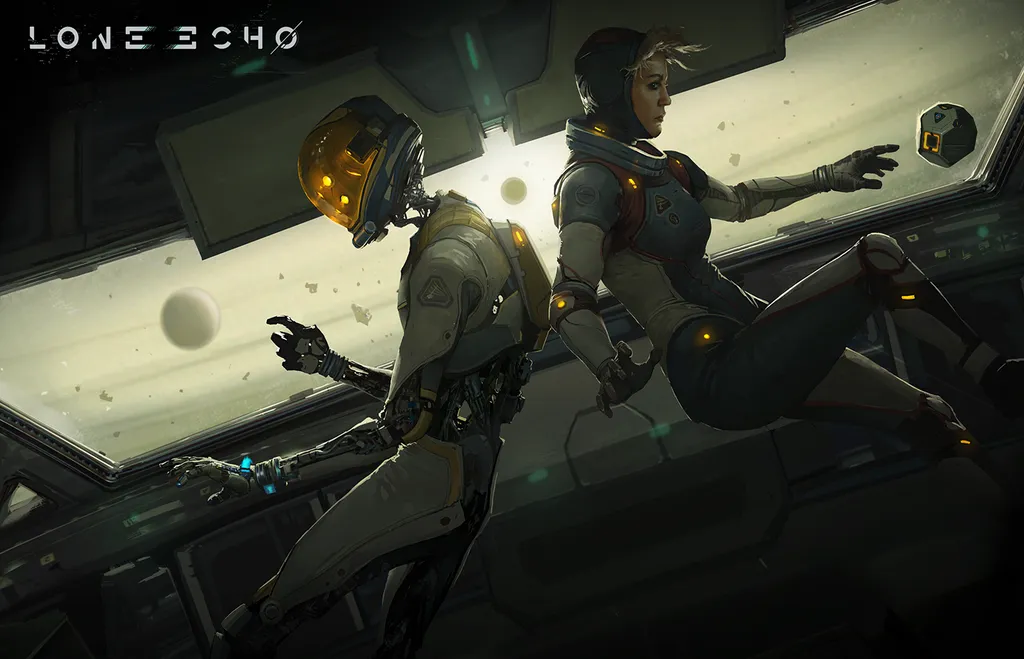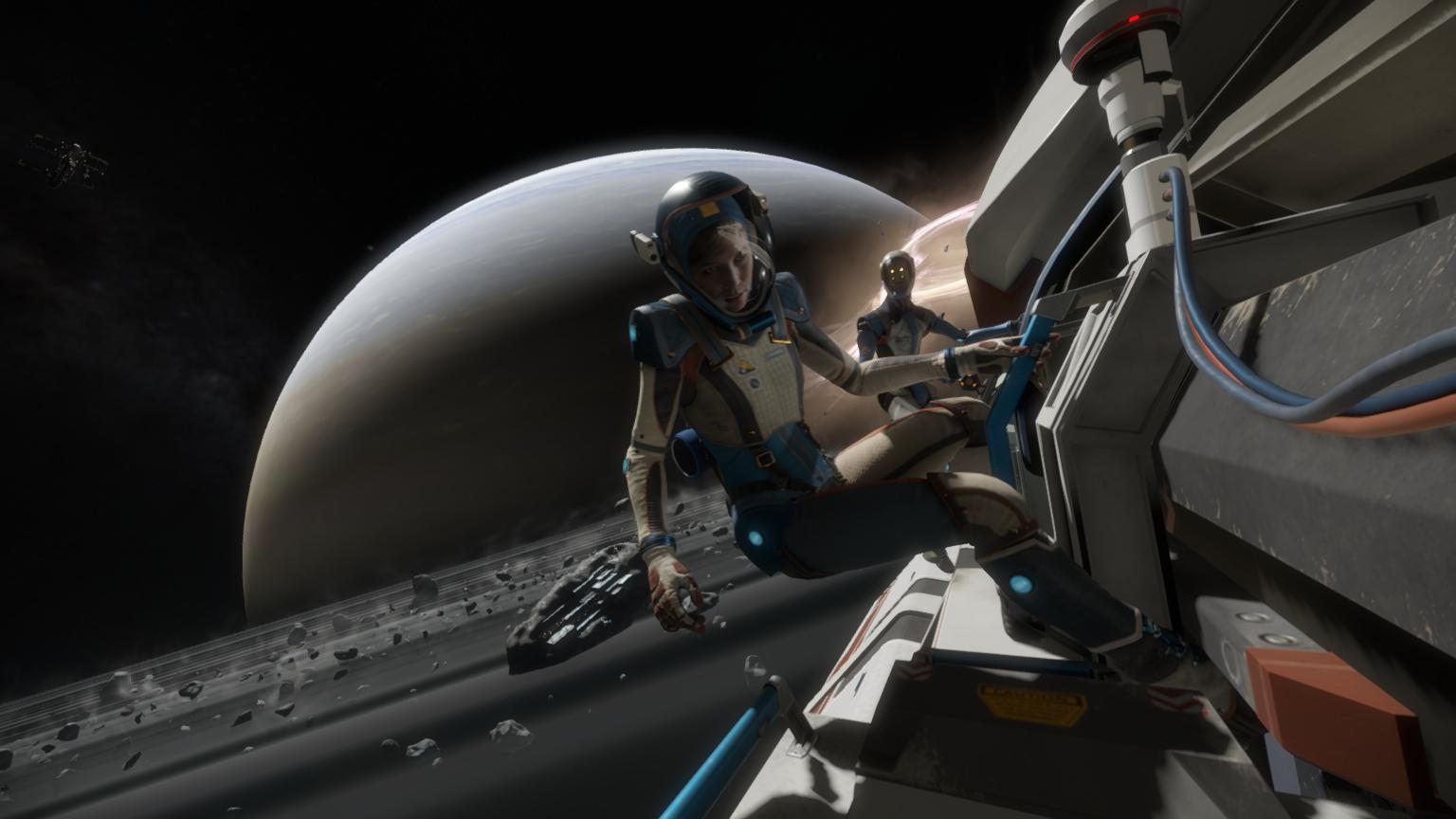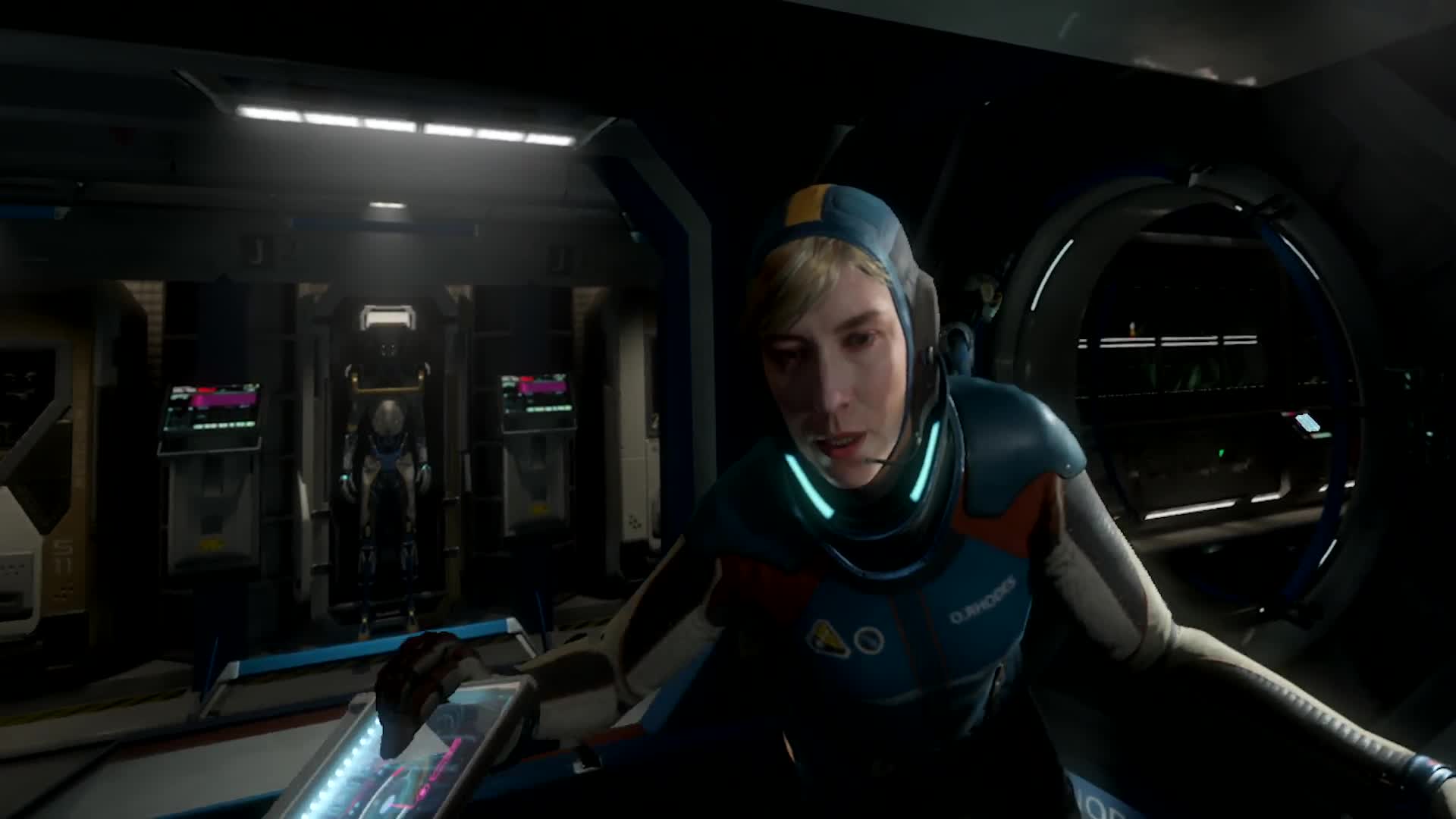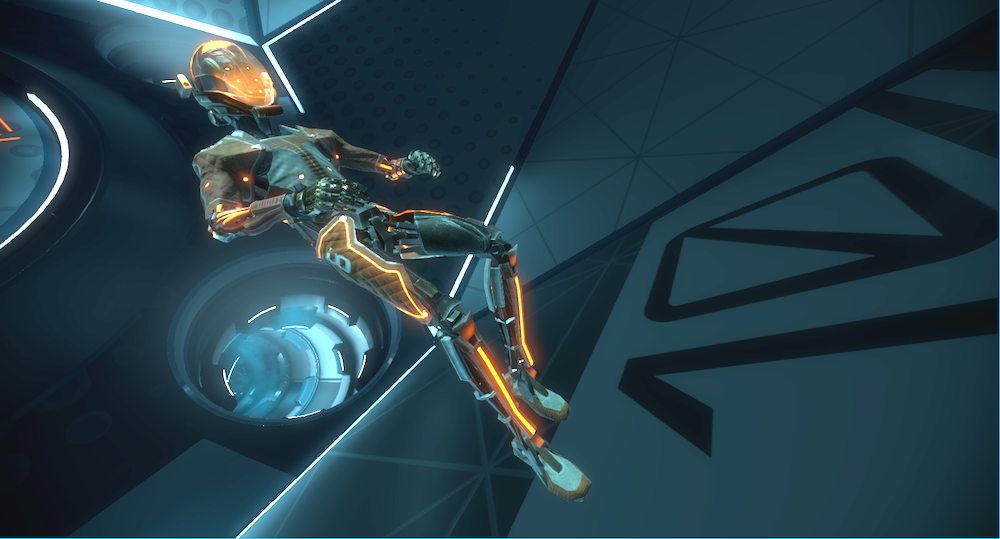I’ve never had as pleasantly a distracted interview as when I spoke to Ru Weerasuriya last week. As I spoke with the Ready At Dawn founder at an Oculus event in London, he kept pausing to glance over at someone playing the studio’s debut VR game, Lone Echo, either of his own choosing or when a fellow developer would excitedly beckon his attention.
Weerasuriya’s expression would suddenly shift to one of sheer curiosity and fascination, and he’d turn to me and explain why it was so interesting that the player was doing something in a certain way with a smile on his face as if he were observing a rare miracle of nature. But all there really was was someone wearing an Oculus Rift. What’s all the big fuss about?
“Every single person that I’ve ever seen play this demo or I’ve ever seen play the game gets to the same situation but reacts so differently,” Weerasuriya says, excitedly waving his hands around from inside his coat pockets.
The demo is the same one that was shown at Oculus Connect 3 late last year and the situation the developer is referring to comes right at the end. The player, cast as one of several A.I.-controlled robots comes to the aid of the captain of a space station, stuck on a piece of external machinery. Before you can cut her free, a seemingly freak accident sends debris hurtling your way and you have to rush to save her.
“I will tell you that I’ve never seen two people act exactly the same way,” Weerasuriya explains. “There’s always subtle differences about the speed of which they try to cut her loose and the amount of time they spend looking at what is happening rather than worrying about their friend.”
As soon as I saw the destruction coming our way when I was playing, I moved towards the captain, thinking I could perhaps shield her with my body. Fortunately, she begins to climb away without my help. “That’s a rare thing,” the developer says. “A lot of people have a tendency to cut her loose but know that she’s capable of getting away. Some cut her loose and their first instinct is to try and grab her hand and pull her away.
“I’ve seen everything happen and it’s amazing what it says about human nature: you all react in a different way.”
Lone Echo isn’t going to change based on how players behave; this is still (from what we’ve seen) a linear adventure similar to Ready At Dawn’s past games, but observing the differences in player behavior has been an unexpected joy for Weerasuriya and his team. It’s made development something of a “social experiment”, in his words.
“When you play with a controller the motions that your character is going through are usually driven by animation that is already done,” he says. “You choose a path: you might run, you might walk, but it’s really not you. When you put someone in VR, it is you–”
He stops mid-sentence as a colleague frantically taps him on the shoulder. The current player has reached a door that they need to cut through the bottom of. Instead of using the game’s locomotion system to pull herself down to the bottom, though, she crouches in real life.
“That’s interesting because that is rare. That is so rare,” Weerasuriya says as he turns back to me with a giddy smile. “Most people won’t crouch because they know automatically they can move their body down.”
Ready at Dawn thinks that some of differences in player reactions are down to age and adaptability to VR itself. But there’s also a deeper, emotional side to it that the developer reckons makes the experience more personal to each player. “Your emotions are involved so deeply inside that world that it changes the way you perceive the world, the way your brain perceives the world, the way you feel about what you’re doing,” Weerasuriya explains. “It’s a medium that’s starting to understand itself, and we’re going to have a lot of successes but I’m sure we’re going to make a lot of mistakes too in the future.”
There’s certainly a physical side to VR that makes almost any experience interesting to watch, but what we haven’t seen much from Lone Echo yet is the narrative side of those emotions. It’s only teased in the demo, but the station’s captain has almost a motherly quality to her, best seen when her robotic children rush to her aid.
“It’s actually kind of an interesting thing especially because we twist the characters on you, you’re not human, the NPC is the more human of the two of you,” Weerasuriya says, later adding: “I want to see how people react to her. You’re going to spend hours with her, I’m curious to see what people are going to do. Will some people distance themselves? People start the game and never want to get close to her. When she gets close, I’ve seen people pull away.
“It’s very much telling of who we are and our boundaries as well.”
Weerasuriya is touching upon something hugely interesting here. Strictly speaking, Lone Echo is just as cinematically atmospheric and graphically driven as the studio’s PS4 exclusive, The Order: 1886, but the player agency and immersion that VR provides might just help this Rift exclusive succeed where its last game didn’t.
Capitalizing on all of that requires a proper understanding of what VR really is. “I think it is a big mistake to think of it as an extension of something else or a subset of something,” Weerasuriya explains. “This is us exploring new ways of expressing ourselves. Whether it’s from the books, movies, theater, whatever, nobody looks at those as being subsets of anything else. This is about experience. This is about immersion.”
Much of the game’s development has been about trial and error too, and that may ultimately mean Lone Echo is a stepping stone to something bigger for Ready At Dawn, and it’s got a lot of crazy ideas – if not necessarily plans — about the future. Not to mention the intense and entirely separate multiplayer mode they’ve built.
“What if you build a true real-time AI that could respond to certain things a certain way not because you’ve written the lines exactly as it’s supposed to be, but because she’s responding to the way you acted,” Weerasuriya ponders, “That’s really kind of scary and interesting.
As for release? “The game is getting closer to alpha I would say right now,” the developer comment. While he wouldn’t reveal an exact date, he did suggest an announcement would be made in a few weeks, reconfirming it will be out in 2017.
Lone Echo might be on of VR’s most lavish games yet, but after speaking with Ready At Dawn it’s not the graphics or the atmosphere that interest me the most, it’s what each individual player is going to take from the experience. I can’t wait to see what they discover, but for Ready At Dawn, the sun might be coming up on something new.






























